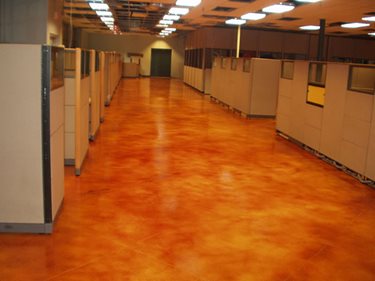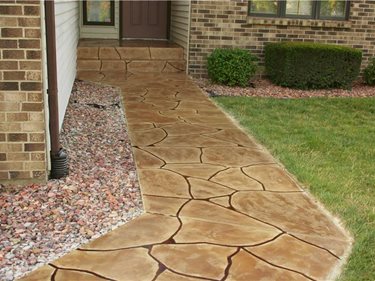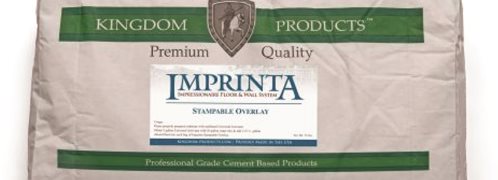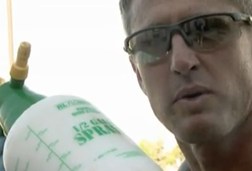- Concrete Overlays Home
- Get the Look - Interior Overlay Pictures
- When to Use a Polymer Overlay
- Comparison Chart of Overlay Systems: Which is best for your project?
- Five Factors to Consider when Choosing a Resurfacing System
- Concrete Overlay Reviews
- Types of Overlays
- Epoxy Coatings
- Microtoppings & Skim Coats
- Self-Leveling Overlays
- Spray-Down Toppings
- Polishable Overlays
- Stamped Concrete Overlays
- Preparing Concrete for Resurfacing
- Concrete Resurfacing
- Reducing Bond Failures Caused by Moisture-Vapor Transmission
- Don't Let Water Vapor Delaminate Your Overlay: How to seal concrete before an overlay
- How-To Tips for Installing Concrete Overlays
- Answers to Common Questions About Concrete Overlays: Advice from expert Chris Sullivan
- How to Add Color to Concrete Overlays
- How to Protect and Maintain Resurfaced Concrete
- Overlay Tools: Seven essential tools for concrete resurfacing
- Related Information
- Concrete Overlay Videos, with Bob Harris
- Decorative Concrete Overlays: A primer of the various overlay types and the decorative possibilities with each
- Vertical Concrete Overlays: Lightweight cement-based overlays mimic stone, brick, and other wall textures
When to Use a Polymer-Modified Overlay
Concrete overlays are an alternative to breaking out and replacing an existing concrete slab, which can be expensive, messy, disruptive, and time-consuming. With an overlay, you can give worn, lackluster concrete a decorative makeover or restore it to like-new condition in as little as a day and at a fraction of the cost.
Find Products: Interior Overlays & Toppings
Polymer-modified overlays are ideal for:
- Adding pattern, texture, and color to exterior concrete slabs, including patios, pool decks, driveways, and sidewalks. Using special techniques and tools, skilled installers can precisely replicate the look and feel of natural stone, brick, tile, or slate.
- Resurfacing interior floors, including those previously covered with linoleum tile or carpeting (after removal of all residual mastic). With the use of stains or dyes, it's possible to create colorful graphic designs, logos, or stenciled patterns. (Another highly versatile decorative topping for interior floors is epoxy terrazzo.)
- Smoothing and leveling uneven or spalled concrete surfaces. (Watch the video below for more details.)
- Restoring surfaces quickly with minimal downtime. Polymer overlays cure fast and some systems can support foot traffic within a few hours.
 Trowelled down overlay Concepts In Concrete, Inc. in Bensalem, PA
Trowelled down overlay Concepts In Concrete, Inc. in Bensalem, PA
 Concrete walkway with overlay, featuring a flagstone pattern. Special Effex Machesney Park, IL
Concrete walkway with overlay, featuring a flagstone pattern. Special Effex Machesney Park, ILNot all existing concrete is a suitable candidate for an overlay. The concrete must be structurally sound, without gapping cracks, severe delamination, or an unstable subbase. Proper surface preparation of the concrete is also imperative to ensure good bonding of the overlay. Any non-structural cracks wider than hairline should also be repaired. (Read more about repairing cracks in concrete.)
 Rapid Set Skim Coat
Repairs, levels, and smooths concrete for applications.
Rapid Set Skim Coat
Repairs, levels, and smooths concrete for applications.
 Thin Micro-Topping
Produces durable surface to color or stain
Thin Micro-Topping
Produces durable surface to color or stain
 Self Leveling Overlay
Find the overlay to meet your project's needs
Self Leveling Overlay
Find the overlay to meet your project's needs
 T1000 Stampable Overlay
For use with resurfacing concrete floors and hardscapes.
T1000 Stampable Overlay
For use with resurfacing concrete floors and hardscapes.
 Broom Overlay Mix 6000 PSI
Add water and mix - Grey or white
Broom Overlay Mix 6000 PSI
Add water and mix - Grey or white
 Flooring & Coating System
Epoxy Flooring System designed for concrete
Flooring & Coating System
Epoxy Flooring System designed for concrete
 Stamped Concrete Overlay
Warm weather and cold weather formulas
Stamped Concrete Overlay
Warm weather and cold weather formulas
 Imprinta Stampable Overlay
2-component system
Imprinta Stampable Overlay
2-component system





